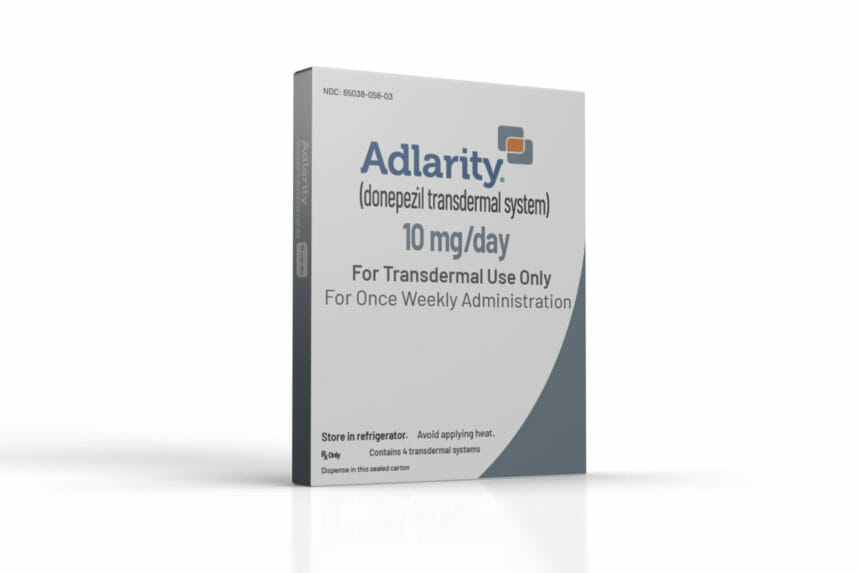
A wearable patch that delivers the Alzheimer’s drug donepezil is expected to be on the market by this fall. The Food and Drug Administration approved Boston-based Corium’s Adlarity last week as a treatment for patients with mild to severe Alzheimer’s Disease.
The patch can be worn for seven days and the patented technology behind it – known as Coreplex – is the same technology used in Crest Whitestrips.
“In our studies, people have worn it throughout a 7-day period while they are taking daily showers and doing daily activities,” Charles Oh, Corium’s chief medical officer, told McKnight’s Home Care Daily Pulse. “It’s a remarkable set of technologies that have been developed at Corium for over the past 20 years.”
Donepezil is in a class of medication called cholinesterase inhibitors that help improve mental function for people with dementia and Alzheimer’s. Oh said Adlarity not only makes it easier for patients and caregivers to administer medication, he said it also delivers a more consistent medication dose than oral options.
“Even with pill form, every time you take it your blood levels go up and then come down before you take the next dose,” Oh explained. “Our patch delivers a very consistent level of systemic exposure right in the middle of that oral pill range.”
Adlarity has other advantages over its oral counterparts, according to Oh. He said donepezil in pill form often causes gastrointestinal side effects, such as nausea, vomiting and diarrhea. The pill can also cause dizziness. Oh said patients who used the patch in clinical trials had low incidence of those side effects.
Although Adlarity is the first transdermal patch to deliver an Alzheimer’s drug, it faces a crowded market, according to Clinical Trials Arena. Donepezil is one of the most commonly prescribed Alzheimer’s medications, with Aricept and a number of generic brands already dominating the market.
Still, the demand for medication to treat Alzheimer’s is only expected to grow. Over the next 25 years, the number of Americans who will be stricken with the disease is expected to more than double from 6 million to 13 million.



